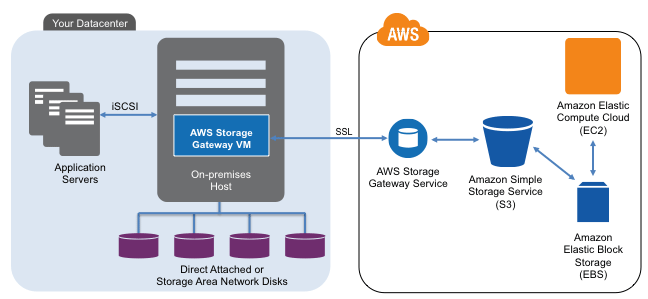AWS storage gateway is a service, in which a virtual storage appliance (on a hypervisor) is placed in your on-premise data center. The virtual appliance, in turn, connects to AWS cloud storage services. All the data (from on-prem storages) which is connected to the virtual appliance will be written to AWS storage seamlessly.

Storage Gateway Essentials
In this section, we will look into the storage gateway essentials and reference architectures required for AWS certification.
Key Points
- The Storage gateway appliance can be downloaded as a virtual machine from AWS.
- The virtual appliance supports Vmware ESXi, Microsft Hyper v or a supported ec2 AMI.
- Storage gateway has a functionality to upload only the data that has been changed.
- You can use Storage gateway with direct connect to increase the throughput.
Storage Gateway Types
Following are the three different types of storage gateways.
- Gateway Stored Volumes:- In this model, you keep all the data in your data center and storage gateway will asynchronously copy all the data to AWS storage like s3 or glacier. This is one type of inexpensive offsite backup strategy you can design for your organization.
- Gateway Cached Volume:- In this model, only frequently accessed data will be present on the local storage and all other data will be present in s3. This model will save you some money but data cannot be accessed if there is no internet connectivity.
- Gateway Virtual Tape Library:- This model support backing up data from a tape-based backup solution to AWS by integrating it with Gateway VTL cartridges. All these data can be backed up to a virtual tape library (s3) or virtual tape shelf (Glacier). The VTl has an industry standard ISCSI interface which your backup application can use to integrate.
Reference Architecture:
You can find the reference architecture from here -> Storage gateway reference architecture
